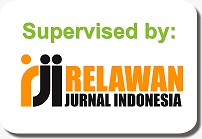Modifying and Assessing Validity and Reliability of Motivation for Reading Questionnaire
DOI:
https://doi.org/10.32939/tarbawi.v17i1.697Keywords:
Modifying and Assessing, Motivations for Reading Questionnaire, MRQ, Validity and ReliabilityAbstract
This study aimed to describe the modification process and validity and reliability assessment of instruments regarding motivations for the reading questionnaire (MRQ) for measuring reading motivation of junior high school students in Jambi, Indonesia. Eighty-three students participated in this study, selected through the respondent who returned the questionnaires. The corrected items' total correlation of SPSS 23 was applied to examine the validity and reliability of MRQ. The corrected items' total correlation of SPSS statistical analyses showed that all of the 53 modification items of MRQ were valid and reliable. It indicated that all 53 items of MRQ were appropriate for measuring the reading motivation of junior high school students in Jambi, Indonesia. It can provide a future studies screening tool for measuring the students' reading motivation.
Downloads
References
Aggio, D., Fairclough, S., Knowles, Z., & Graves, L. (2016). Validity and reliability of a modified English version of the physical activity questionnaire for adolescents. Archives of Public Health, 74(3), 2-9.
Alhamdu. (2015). Interest and Reading Motivation. PSIKIS-Jurnal Psikologi Islami, 1(1), 1-10. Retrieved from https://www.researchgate.net/publication/323576174.
Anshory, M., Wahono, C. S., Kalim, H., & Rasyid, H. A. (2018). Validation of Modified COPCORD Questionnaire Indonesian Version as Screening Tool for Joint Pain and Musculoskeletal Diseases. Indonesian Journal of Rheumatology 10(1), 24-30.
Caruso, R., Pittella, F., Grugnetti, A. M., Ausili, D., Pastore, U., Stievano, A., Dellafiore, F., & Arrigoni, C. (2019). Modified Research Utilization Questionnaire: Development and Validation Study among Italian Nurses. Asian Nursing Research, 13, 61-68.
Dawson, C. (2002). Practical Research Methods, New Delhi, UBS Publishers’ Distributors.
Guthrie, J. T., Coddington, C.S., & Wigfield, A. (2009). Profiles of Reading Motivation among African American and Caucasian Students. Journal of Literacy Research, 41(1), 317–353.
Indrayadi, T. (2021). Indonesian EFL Learners’ Reading Motivation. Indonesian Journal of English Language Teaching and Applied Linguistics, 5(2), 335-346.
Jones, B. D. (2009). Motivating Students to Engage in Learning: The MUSIC Model of Academic Motivation. International Journal of Teaching and Learning in Higher Education. 21(2), 272-285. Retrieved from http://www.isetl.org/ijtlhe/
Malloy, J. A., Marinak, B. A., Gambrell., & Mazzoni, S. A. (2013). Assessing Motivation to Read: The Motivation to Read Profile–Revised. The Reading Teacher. 67(4), 273–282.
Stewart, A. L., Thrasher, A. D., Goldberg, J., Shea, J. A. (2012). A Framework for Understanding Modifications to Measures for Diverse Populations. J Aging Health. 24(6), 992–1017.
Taber, K. S. (2018). The Use of Cronbach’s Alpha When Developing and Reporting Research Instruments in Science Education. Res Sci Educ, 48, 1273–1296
Wang, J. H., & Guthrie, J. T. (2004). Modeling the effects of intrinsic motivation, extrinsic motivation, amount of reading, and past reading achievement on text comprehension between U.S. and Chinese students. Reading Research Quarterly. 39 (2), 162–186.
Downloads
Published
Issue
Section
License
Copyright (c) 2021 Toni Indrayadi

This work is licensed under a Creative Commons Attribution-ShareAlike 4.0 International License.









